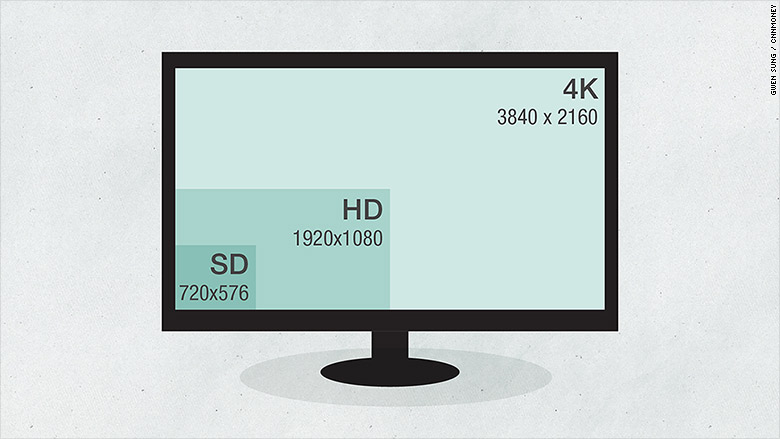
Ultra high-definition TVs produce clearer, more vibrant pictures -- but they might also increase energy usage and your utility bill.
UHD TVs -- sometimes referred to as 4K -- can display four times the resolution of current high definition screens.
Newer 4K TVs also use 30% more power than high-def models on average, according to a report from the Natural Resources Defense Council published Tuesday.
"Americans' residential energy bills could rise by more than $1 billion per year if all televisions larger than 36 inches transition to 4K at today's average efficiency," the report said.
After a year, that would translate to 8 billion kilowatt-hours (kWh) in additional electricity use -- or three times the amount of electricity used by homes in San Francisco.
From an environmental perspective, this would mean an additional 4.5 million metric tons of carbon dioxide emissions a year.
"The potential national energy impacts of the shift to 4K TVs are profound," according to the report.
So why do current 4K TVs use so much more energy?
Contrary to what some might think, the increased screen size of TVs isn't necessarily a factor in energy use.
The report said the primary reason is their backlights, which need to be brighter in order to produce more vivid pictures on screens with more pixels. Currently, most high definition TVs have a 1,920 by 1,080 pixel resolution. UHD TVs have 3,840 by 2,160 pixel resolutions.

Another big upcoming concern is the processing power needed to display videos with high dynamic range encoding. HDR technology combines several images together and takes the best parts of each to produce a final picture. Many cameras, including the one on iPhones, have this feature.
For videos, HDR technology tries to produce images that look as lifelike as possible by displaying a huge range of brightness and contrast levels.
The feature alone increased power use by 47% in one case.
In newer UHD TVs, functions like Wi-Fi and faster reboot times also require more power.
"The good news is that the technology already exists to prevent much of this increased energy use," they said. "Some of the most efficient 4K TV models on the market today use little to no more power than similar-size HD TVs."
But energy use varies widely across 4K models right now.
The difference between the most and least energy efficient 55-inch 4K TV can mean an extra $246 in a utility bill over 10 years -- the average life of a TV.
For this study, the NRDC and its partners tested 20 LCD TVs and 1 OLED TV ranging from 49 inches to 55 inches. They included models made by LG, Panasonic, Samsung, Sharp and Sony in 2014 and 2015.
For people who own a 4K TV already, the report has a few recommendations for reducing energy use: Turn on automatic brightness controls, turn off the "quick start" booting options, and avoid using video game consoles to stream movies.
More than 40 to 45 million new TVs are sold each year, and about 5 million of those are UHD. The NRDC says it expects this number to grow "exponentially."

